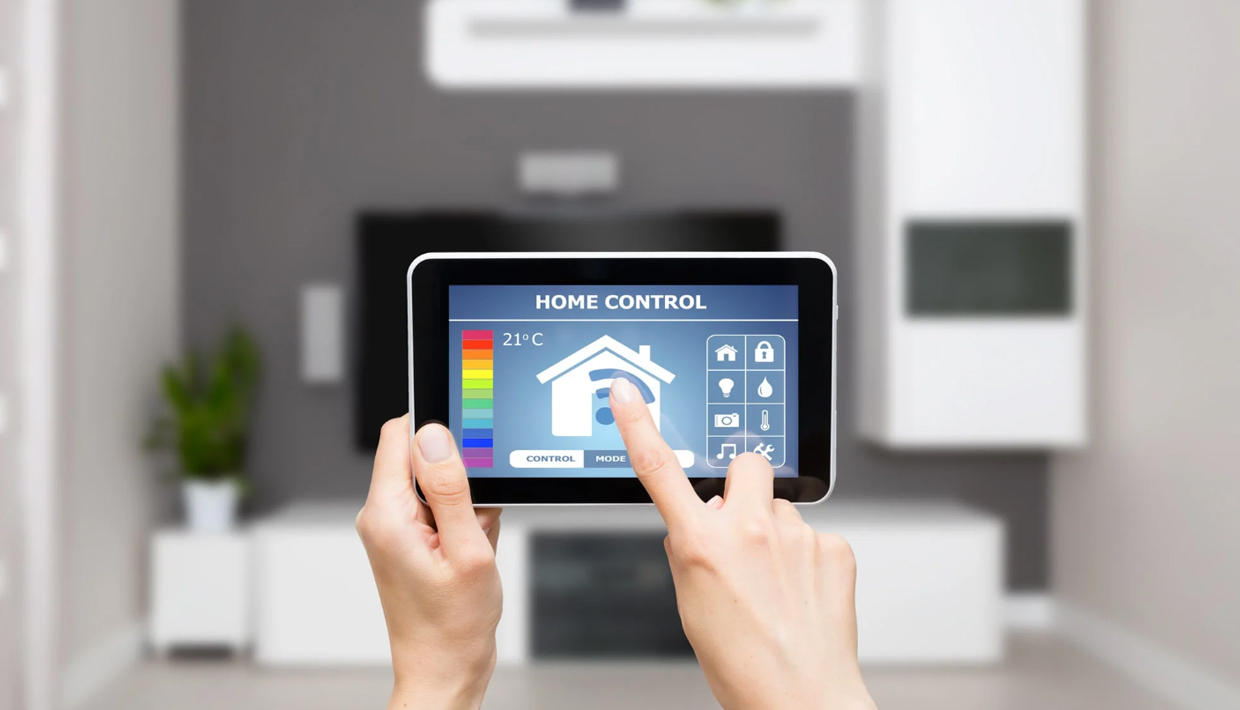Pros and Cons of Smart Home Technology

Smart technology offers numerous advantages, ranging from the convenience of running household appliances such as the washing machine while at work, to the comfort of remotely adjusting the thermostat on a chilly winter day.
Common advantages of a smart home include the following:
- Provides assurance. Homeowners can monitor their homes remotely, countering dangers such as a forgotten coffee maker left on or a front door left unlocked.
- Accommodates user preferences for convenience. For example, users can program their garage door to open, the lights to go on, the fireplace to turn on and their favorite music to play once they arrive home.
- Offers peace of mind. IoT devices enable family members or caregivers to remotely monitor the health and well-being of seniors, allowing them to safely remain at home longer, rather than moving to an assisted residence.
- Improves efficiency. Instead of leaving the air conditioning on all day, a smart home system can learn homeowner behaviors to ensure the house is cooled down by the time they return home.
- Saves resources and money. With a smart irrigation system, the lawn is watered only when needed and with the exact amount of water necessary. With home automation devices and a smart system setup, energy, water and other resources are used more efficiently, which helps save both natural resources and money for the consumer.
- Manages tasks. Smart virtual assistants, such as Google Home or Amazon Echo, can accomplish tasks through speech recognition and voice commands. For example, homeowners can use voice commands to turn on music, search the web and control their household smart devices.
However, home automation systems have struggled to become mainstream, in part due to their technical nature. Common disadvantages of a smart home include the following:
- Requires a reliable internet connection. An unreliable internet connection or a network going down in the event of an outage can leave the devices and gadgets connected to a smart home inoperable.
- Perceived complexity. Some people have difficulties or a lack of patience with technology. Smart home manufacturers and alliances are working on reducing complexity and improving the user experience to make it enjoyable and beneficial for users of all technical levels.
- Lack of standards. For home automation systems to be truly effective, devices must be interoperable regardless of manufacturer and use the same protocol or, at least, complementary ones. As it’s a relatively new market, there’s no gold standard for home automation yet. However, standard alliances are partnering with manufacturers and protocols to ensure interoperability and a seamless user experience.
- Questionable security. A lot devices introduce security challenges because most of them lack built-in encryption. In addition, they can serve as access points for the broader network’s sensitive data, increasing the attack surface. According to a recent report from consumer IoT market research firm Parks Associates, 55% of consumers are concerned about the security of their smart home devices. If hackers can infiltrate a smart device, they could potentially turn off the lights and alarms and unlock the doors, leaving a home defenseless to a break-in.
- Lack of data privacy. Many smart homeowners also worry about data privacy. According to the Parks Associates’ research report, about 72% of consumers expressed worry or strong concern regarding the security of their personal data collected and transmitted by smart home devices. Likewise, they’re equally concerned about the potential unauthorized access or control of smart devices without their permission. While smart home device and platform manufacturers collect consumer data to better tailor their products or offer new and improved services to customers, trust and transparency are critical to manufacturers looking to gain new customers.
- Expense. Even though prices are coming down, many smart home devices are still expensive, and an entire house makeover could cost thousands of dollars.
